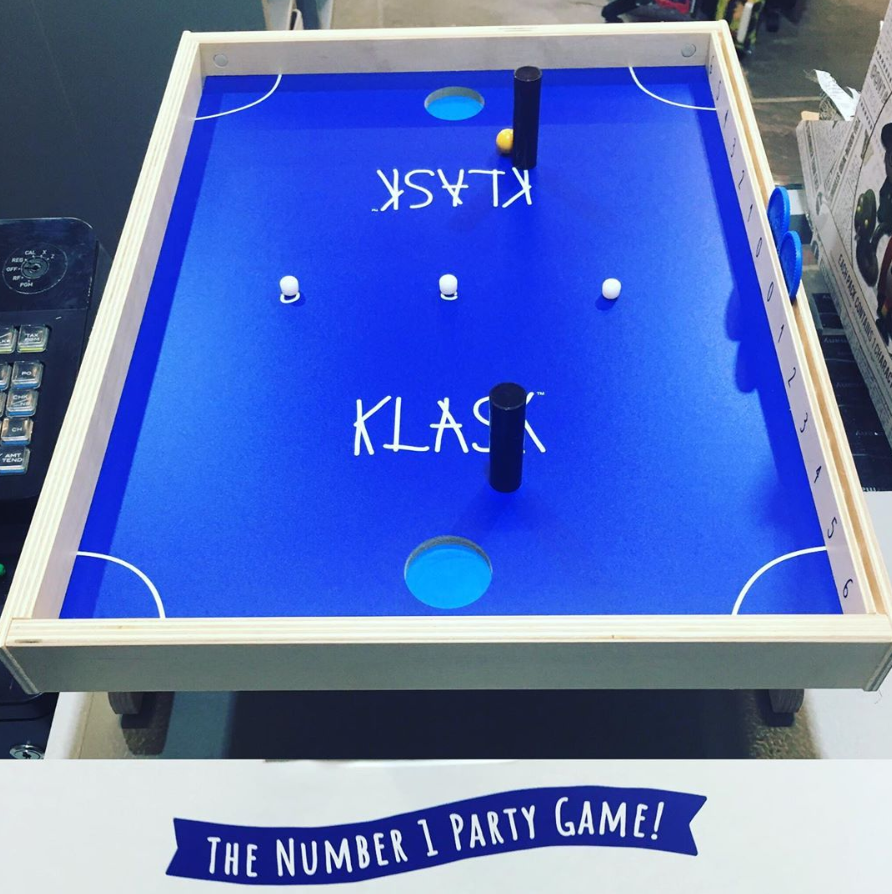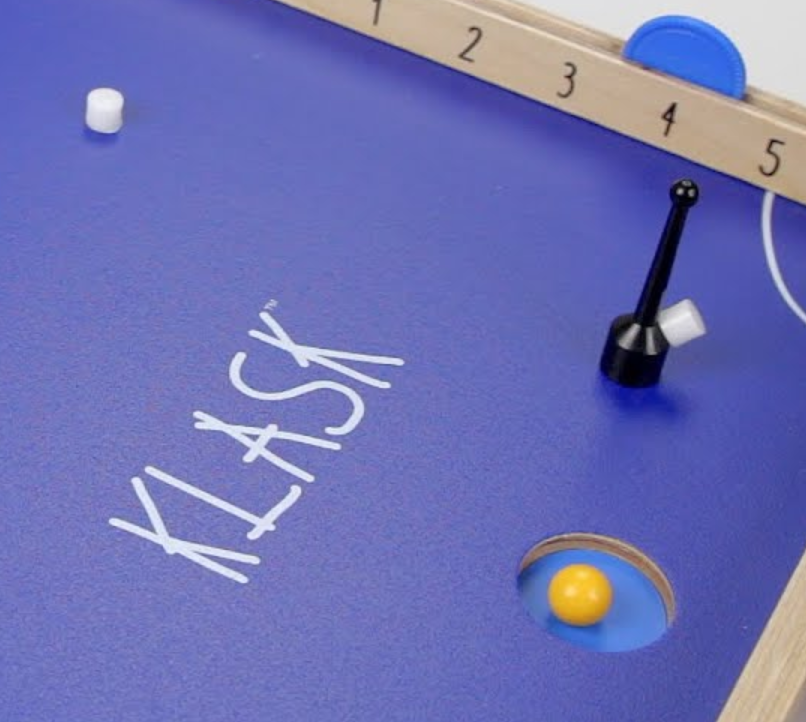Pay with

If you still haven’t heard of Denmark’s brilliantly fun – and fiercely competitive – Klask, then we think it’s high time you were introduced.

Klask is proof that tabletop gaming doesn’t have to be all rulebooks and maths equations – it can be a downright sporting event!
This is a high-energy game of hand-eye coordination and swift reflexes which may only take five minutes to produce a winner. But, at the same time, there’s potential there for motivated players to continue honing their skills, to discover the surprising new techniques that give them the edge in battle, which cause Klask to become so much more than the sum of it’s elegantly minimalistic parts.
At it’s core, the basic objective is one with which we’re all surely familiar: ball goes in player’s goal, other player gets a point. Where Klask’s brilliance comes in is the way in which it combines the old with just enough of the new, a sprinkling of bells and whistles that don’t overshadow that core goal but mix seamlessly with it.
It’s the biscuits.

Biscuits are what Klask calls the little white magnets forever journeying back and forth across its pitch. Accidentally get too close to one with your player pawn – which is in itself driven by the use of a magnet you hold in your hand beneath the board – and the biscuit will latch on. Should this happen again and you find yourself carrying two biscuits, then that’s one point to your opponent!
This simple addition transforms an otherwise straightforward game of goalkeeping into a hotbed of hazards, as players desperately attempt to balance dodging with blocking, all too aware that diving out of the way of a rogue magnet and leaving your goal completely wide open usually go hand in hand.
Any concerns that this is starting to sound a little too chaotic can be swept aside, though: Klask proves ever more to be a game about skill, geometry and precision. As the game board is just the right size for you to take in all the information, Klask rewards your ability to make quick reads of the landscape and adapt to it on the fly. And since the ball itself won’t stick to any magnets, the game invites you to take careful aim at the biscuits as much as the opposing goal – usually with the intention of relocating the entire minefield to the other player’s side of the pitch!
Thankfully, there’s a divide underneath the board which prevents players from actually crossing their pawn into the other person’s side. This ensures the other player has enough time to manoeuvre around your lovingly delivered deathtraps, and best plan out their own revenge on the return serve – lending an engaging rhythm to the whole experience.

I haven’t even spoke about Klask’s charming wooden aesthetic, or the high level tournaments I’ve watched online, in which a Danish grand champion dares to slam their pawn directly into a biscuit at an alarming speed, teleporting it onto the other player’s piece. Nor have I talked about how there’s a four player version.

But to ramble on for pages and pages seems entirely at odds with Klask’s instant, “pick-it-up-and-immediately-enjoy-it” spirit.
So, I’ll stop.